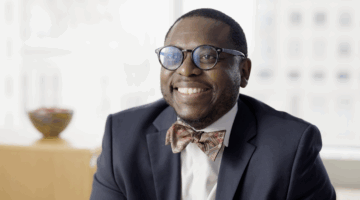On today’s date in 1905, the trial of the Stratton brothers began in the London Criminal Court. The case marks the first time in recorded Western jurisprudence that fingerprint evidence was used to obtain a murder conviction. This week, On Remand looks back at courts’ dealings with fingerprint evidence and the story of a lawyer whose fingerprints led to his erroneous arrest as a terrorist.
In March 1905, Thomas and Ann Farrow were murdered in their south London art shop. The crime scene suggested the motive — a cash box had been pried open and left empty — but offered investigators few clues about the perpetrator. With only a bloodstained sink and two discarded masks at the scene, and no murder weapon, signs of forced entry, or witnesses to the crime, investigators appeared to have no leads. But one other clue found at the scene — a bloody fingerprint on the cash box’s inner tray — would eventually break the case….

How The Law Office Of Stephen L. Thomas Jr. Reclaimed Valuable Hours And Strengthened Client Care With 8am
Founded in 2017, the Baltimore-based Law Office of Stephen L. Thomas Jr. unified case management, communication, and payments with 8am—saving 10–20 hours a week for clients, trials, and growth.
A few years earlier, a fingerprint would not have been much help to investigators. But in 1901, Scotland Yard established a fingerprint department, based upon a system set up in India to discourage fraud in the pension system. According to Simon Cole’s book Suspect Identities, racist “British officials responsible for disbursing pensions could not tell one Indian from another… [so] a pension could be collected by almost any body that presented itself.” Fortunately for the Stratton investigators, a witness soon presented a body to go with the bloody fingerprint. Acting on a tip that Alfred Stratton was seen near the Farrow shop on the morning of the murders, the investigators arrested and fingerprinted Alfred and his brother Albert. At the Strattons’ trial, Detective Inspector Charles Collins, who had worked in Scotland Yard’s fingerprint department since its establishment, testified that Alfred Stratton’s right thumb corresponded with the mark on the cash box.
Much like today’s trials, the Stratton case became a “battle of the experts.” Two heavyweight experts worked on behalf of the Strattons: Henry Faulds, the “father” of the British fingerprint identification system and John George Garson, the former chief of Scotland Yard’s “Anthropometric Office.” Garson concluded that the print on the cash box did not match Alfred’s prints. But Garson’s credibility was damaged when the jury discovered that he had sent two letters on the same day offering to serve as an expert witness – one to the prosecution and one to the defense. Ultimately, the jury agreed with the prosecution that the fingerprint pointed to the Strattons and entered a guilty verdict.
At about the same time of the Stratton case, fingerprint identification was making its way to America. When England’s crown jewels traveled to St. Louis for the 1904 World’s Fair, the science of fingerprinting stowed away on the trip. Although New York prisons were already testing fingerprinting, and touting their expertise at the World’s Fair, their exhibit attracted little attention until the handsome, theatrical John Kenneth Ferrier of Scotland Yard commandeered it. Ferrier, who was supposed to be guarding the crown jewels, instead entertained audiences by identifying the spectator who had left a fingerprint on a test surface. His theatrics earned him a national tour after the World’s Fair during which he trained various police departments on fingerprint technique and identification. Indeed, when People v. Jennings — one of the earliest U.S. cases to examine the admissibility of fingerprint evidence — went to trial in 1911, one of Ferrier’s students, Mary Holland, testified for the prosecution.